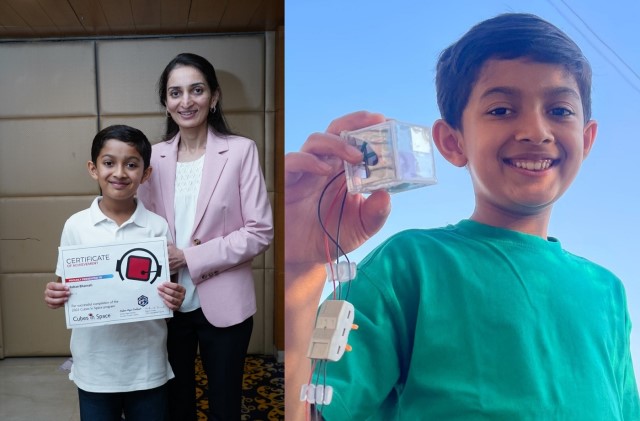PUNE: His love for science has taken 11-year-old Rohan Bhansali’s dream all the way to space. Pune-lad Rohan Bhansali made the city proud as he was selected for the National Aeronautics and Space Administration’s (NASA) Cubes in Space program conducted which provides students access to design and test experiments on NASA missions. Small-size experiments are designed to conduct research on real-world space or Earth-based problems.
Cubes in the Space program, which encouraged kids ranging from 11 to 18 years of age across the world to design and build a satellite that fits in the palm of the hand. This project would study the barrier of various industrial materials to safeguard against high-intensity solar UV radiation (UV C, B, A) to better protect humans, goods, and payloads in space flight. The project was selected after multiple and rigorous rounds of selection, with the NASA team and their project leader Ms. Amber.
The cube contains 4 UV sensors, 3 selected materials (silk, aluminum, plastic), and a microprocessor to log the data every 5 minutes of the cube’s 12-hour journey in the stratosphere. The stratosphere is as high as 1, 64,041 feet compared to Airplanes flying at 30,000 ft. above sea level.
Beaming with confidence and excitement the standard sixth student of Vidya Valley School, Rohan said, “I came to know about the project from my teacher Jaya Ma’am in school when I was shortlisted to apply for it due to my interest in science. Vidya Valley’s Principal Ms. Nalini Sengupta encourages participation in such initiatives. The school’s support and encouragement indeed was very special.”
He further added, “I am interested in science and like to participate in various extracurricular activities. I decided to participate with the intent to learn about newer concepts in science. I was encouraged and supported by my family members.”
Sharing further details about the project, Rohan, said, “Space is immensely exciting and mostly unexplored. The radius of our solar system is almost 9 billion km. And 13 lakh earth can fit into the sun. I came across these mind-boggling facts during my research. Therefore, I wanted to study the effect of this radiation on commonly used materials such as silk for clothing, or food and medicine packaging.”
Throwing further light on the project he said, “I built a 4 by 4 cm experiment with sensors, a small computer, and a coded program for the experiment to run automatically. My experience has been just fabulous, and I am really excited to see the outcome of this experiment.”
For the record, NASA has been researching human spaceflight hazards related to stressors like radiation placed on the human body during missions. Even with protective shielding, astronauts receive a daily dosage of radiation equal to 8 chest X-rays. Hence, materials used in daily use -silk, aluminum, and plastic were selected to determine which would offer extra protection from UV radiation and protect the astronauts.


